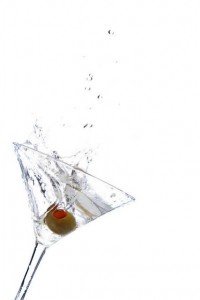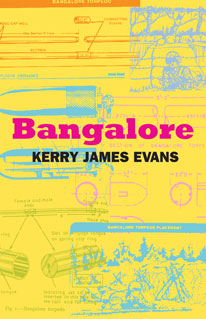12 Months of Essays on Poetry and Craft: February 2013 Vol. 5 # 4
 This isn’t a new concept. In fact, it’s as old as poetry itself. Perhaps though, for the sake of this short essay, the term, which Kerry James Evans and I came up with independent of any perfunctory research, just might be: The Active Image.
This isn’t a new concept. In fact, it’s as old as poetry itself. Perhaps though, for the sake of this short essay, the term, which Kerry James Evans and I came up with independent of any perfunctory research, just might be: The Active Image.  crowded bar are implicitly conjured in the reader’s imagination. One could make that argument, I suppose, but every great poem, every great story, is about a journey not just a destination, just as every impassible gorge needs a bridge to sway between its two sides, if we are to pass. The buildup gives resonance to any revelation. And not to mention, to favor the precision of the image and scene is to spend a little extra time developing it (purposefully developing it)—that the development, the building, is essential to animating the scene.
crowded bar are implicitly conjured in the reader’s imagination. One could make that argument, I suppose, but every great poem, every great story, is about a journey not just a destination, just as every impassible gorge needs a bridge to sway between its two sides, if we are to pass. The buildup gives resonance to any revelation. And not to mention, to favor the precision of the image and scene is to spend a little extra time developing it (purposefully developing it)—that the development, the building, is essential to animating the scene. Featured Poet: May 2010 Vol. 2 #3

Kerry James Evans
Kerry James Evans is a PhD candidate in creative writing at
This reading was recorded by Frank Giampietro and FSU English Department at the Warehouse, an off-campus location at
Featured Poet: November 2008 Vol. 1 #1
Kerry James Evans
Kerry James has been a finalist in both the Saturnalia and Kent State book contests as well as a finalist for Boston Review’s Discovery Award. He makes his home in southern Illinois, where he’s finishing up his last year in the MFA program of SIUC.
Monopoly
She is always the wheelbarrow—a piece
I can’t grasp. I am the cannon of war.
We never deal out property—the Deluxe
Edition, we’d rather fight, with each roll,
over New York and Boardwalk, Railroads
and Utilities. I’ve yet to own Boardwalk,
but I manage to swindle the Railroads.
Occasionally, I am lucky to land in jail,
where I don’t have to mortgage property
to pay rent. She buys hotels early, casts
me to the ghetto of Baltic. Once, I boasted
three monopolies, won Free Parking—
we place $500 in Free Parking. I bagged
my earnings from the middle, revealing
the moustached man with his shoulders
shrugged, hat tipped. He winked at a stack
of pastels tucked on the edge of town.
The game was fixed. She kept drawing
the good cards from the Community Chest
and Chance. I lived in the suburbs and she
was my landlord. Like my father, I slipped
off and got drunk on Boardwalk, gallivanted
for a while. It cost me everything—she owned
that, too. Fed up, I took out a loan at 10%
interest, paid her and passed Go, collected
two hundred dollars and made a run for it.
Got as far as Pennsylvania before she caught
me stealing shampoo from her hotel. Clogged
barrel, she broke me. Gave me the worst smile:
Cook me supper and I’ll let you stay.
~appeared originally in Eclipse Vol. 19, Fall 2008
Blue Ribbon Tomato Soup
This is dinner: tomato soup
with black pepper and garlic salt,
a grilled cheese buttered
on both sides,
charred in the skillet on the stove.
I serve my brother and sister this meal
with napkins and plastic ware.
We say grace.
Our parents are working.
Parents work.
The meal is superb.
I get a wink and a high-five, turn off
the stove eye—
sometimes I forget.
I am a chef at any restaurant imaginable:
Cracker Barrel, Country Kitchen,
the coffee shop on U.S. 78,
just before the peanut shack
in Carbon Hill.
My brother and sister agree.
They say I ought to enter the county fair.
Drape a cloth over my arm
when I serve.
They remind me not to speak about how
food stamps paid for this meal.
We talk about the neighbors up the hill,
the expiration date on the milk jug.
~appeared originally in Court Green 2008
Design
after Billy Collins
And this, canvas of paintless
numbers, this square, it
is the square
of my imagination, four
corners and seam
running from this
middle, my mother’s awful
trailer, the children
she keeps in daycare—
a square daycare, where I look
back into memory and recall
the driest of squares,
an empty pan
of meatloaf, ketchup
crusting in our stomachs
—my brothers and sisters
and all the children mothers keep.
And I think of the square world
and how it stumbles
down the stairs of space,
while we square off the yard
to plant seed, to remind
our children of what they
cannot have, while we
sample wine from a boxed
bowl, its drip,
dripping on the tile floor
of this, our grouted design.
~appeared originally in Iron Horse Literary Review Volume 10 #2, 2008

